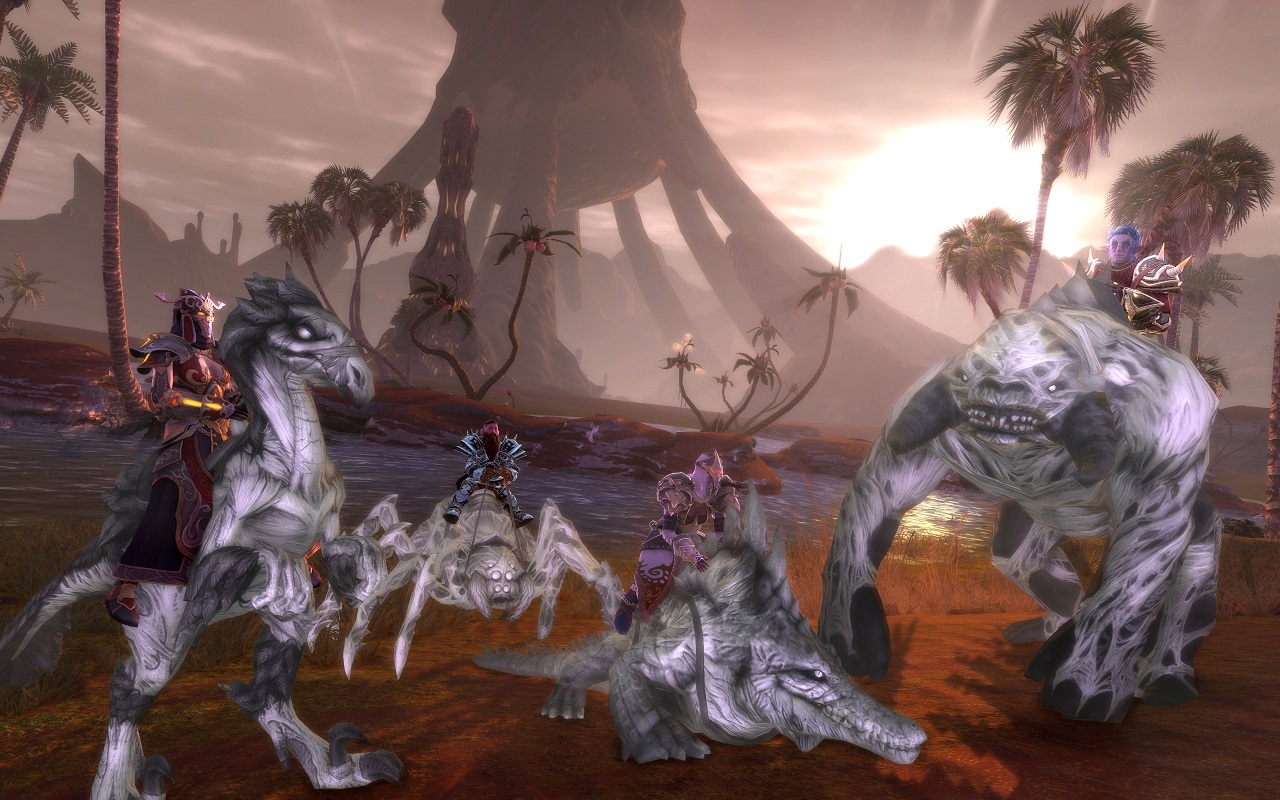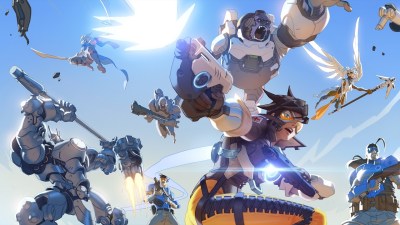Lovers of the MMO genre aren’t short on games to play these days. From the highly popular World of Warcraft to the quickly-growing Wildstar and even the less popular Elder Scrolls Online, there isn’t anywhere that this genre hasn’t covered. We’ve fought dragons, explored space, and swam in the deepest of waters all for the love of quests and hundreds of hours of gameplay. So when we’re told about a new release coming, we typically roll our eyes and sigh. There’s not a lot out there that we haven’t seen, and Trion Worlds didn’t bring us anything new back in 2011.
Having first been released as a subscription-based game, Rift quickly adapted the free-to-play style, offering players a game with wonderful graphics and beautiful, detailed landscapes. Being built from the ground up by a rookie development studio and Trion Worlds, Rift originally released with the ability to catch a player’s eye. Though Rift is cut from the same mold of all the other MMOs out there, it is still a very welcome addition to the MMO genre.
Rift is a visually beautiful game, though you’ll need to be playing on a serious beast of a machine to get its true potential at ultra settings. Even with an over-clocked quad-core processors and our pretty decent video cards, I was still stuck playing only on the high setting in visuals for good frame rates, but I still found myself needing to kick those down some when open world events came to play. Sure, Rift isn’t the most visually appealing game in the genre, but it packs some serious punch compared to many other F2P offerings in the genre, and even comes close to rivaling with Guild Wars 2, a game released well over a year after Rift was launched. But optimization is terrible in Rift.
You will lag at times for no real reason, as will the animations, though I saw these things happen mostly during Rifts or other really big events. This is a big problem that players have talked about endlessly since release, but if you can get past it, then you’re going to have some very serious eye candy moments. And really? Those moments are fairly rare, at least to start with. It’s only in the endgame, where you’re taking on the huge world-bosses in open events or some of the larger scale raids that all of those people and hundreds of spell effects going off at the same time sometimes threaten to reduce the action to something more akin to a Powerpoint presentation.
Audio in Rift is just as good as the visuals. The sounds of the world around you, the voice acting, the music – all of it is composed nicely around you to really bundle the game up into a beautiful creation. Too many times we’ve been overpowered in MMOs by the music or terrible voice acting, and though the voice acting is far from superior, it is much better then you’d probably suspect it to be. The music isn’t Grammy nomination material, but it definitely gives players something wonderful to listen to, and really does well tying in the player with the world they’re immersed in.
I’m certainly not unfamiliar with the beginning aspects of any MMO, and Rift offers just the same as the others do. There are two introductory zones for the two opposing factions – Guardians and Defiants. There’s your typical power-struggle-induced war going on, set up via an introductory time-travel starting area before dropping you in the main world, and Rift isn’t afraid to shake things up a bit in either zone, portraying the chaotic struggle for survival against the oncoming hordes from the Plane of Death. Players will learn the story of what’s going on as they progress through the levels, but it sadly starts to dissipate about midway through.
Regardless of which faction you choose to play though, your starting zone leads to the climatic encounter with Regulos – A dragon who apparently has an identity crisis since he appears as a toothless demon thing at times. The opening is great, and very gripping, but unfortunately after you leave the starting area, the events are hardly spoken about as you begin to level up. As I said, the story doesn’t hold up to what it’s made out to be in the beginning, but the complexity really skyrockets.
Before you even leave your starting area you’ll be in possession of three souls – a class essential thing that you use to level up with. The more points you put in to a soul tree’s branch, the more abilities you’re going to get in the roots.
Making your character is a fully customizable job at the start, allowing you to use different souls available - up to 3 open up during the levelling process - within your selected class. A great example of this is if you want to go down the magical path. A little bit of Pyromancer for offense, a lot of Elementalist for some killer pet capabilities and some Chloromancer for healing abilities, and you’ve got yourself a well-rounded, jack-of-all-trades character. Choosing your character’s “Calling” is your biggest choice though, and you get to choose from four – Mage, Cleric, Warrior or Rogue. This will determine the kind of armor you’ll be wearing and which 9 out of 36 souls you’re going to have access to. You’ll have a ton of different playstyle options, but just remember that not every soul combines well together.
For instance with the Mage Calling – Their trees focus on specific schools of magic, but they have the least amount of versatility in group play. Mages can heal and deal ranged damage, but all the other Callings seem to have access to tanking, ranged and melee damage, support, and healing – Well except for the Warrior who can’t heal at all. But for those of you who just want to get in and play, Rift does offer a few pre-built options.
The Soul Tree system is probably one of the most confusing aspects of Rift, causing even the most veteran of MMO players to become frustrated. Finding what fits together just right and how to properly tweak your character can be a chore at times, as one misplaced talent point can throw off everything you’ve worked for. There is a big lack of restrictions and it makes it all too simple to create a very imbalanced and useless character.
But as with many other MMOs, there are plenty of builds that do work out there, and some of them are very creative - and you can pay a small fee to reset your talents at any time. It isn’t hard to come across these builds on forums, or to find guides and tips on how to make your own builds. Aside from this though, Rift allows you to make one character with many roles - something now sadly missing from World of Warcraft’s more streamlined talent system introduced after removing talent trees. One character can have a role for each situation you’ll find yourself in – Like having healing roles for instances or PvP and a sustainable role for damage in solo situations.
Rift is a lot like other MMOs out there, though. It’s far from original. You’re still going to be walking around a lot, and grinding levels, but very rarely will you find yourself needing to wander off from your adventures to grind extra levels as the story and levels flow wonderfully together, giving no huge jumps in difficulty during the progression of the storyline. This doesn’t mean that Rift is easy though, because it isn’t. The monsters have no forgiveness for you and the combat will hurt. Death even comes with a penalty and if you die enough, those penalties won’t go away unless you visit a healer.
This is an aspect that we don’t see often in MMOs as the genre has gradually moved towards making failure less and less of a punishment, and it makes Rift even more enjoyable. Since there are penalties, you have a reason to pay complete attention to the game, just to make sure you don’t die. Don’t leave your character sitting out in the open world and look away, you may come back to find yourself dead. Sure, you’re still going to be going to this place and collecting ten of these things and coming back to turn them in, but for the most part the questing isn’t terribly repetitive, though I could would have preferred a little more variety. I can’t say you won’t get bored of the adventures to level cap - particualrly once you’re working through the Storm Legion areas, which are often intensely grind-y, but there are still other aspects in Rift that players can get involved with to break away from the typical level and grind style. Whatever you do, don’t go in to Rift expecting anything different though - you’ll be let down quickly.
Content in Rift seems almost endless. The world map is enormous, with tons of islands to explore, hundreds and hundreds of quests, and a huge variety of monsters to kill – or be killed by. Raids, Chronicles, Rifts, Hunt Rifts, Bounty Hunting, Warfronts, Instant Adventures, and Dungeons can also be accessed through out the world, offering players even more to do then just quest. There are tons different dungeons that can be accessed in Rift, ranging from level 1 to level 60. You’ll have three different modes for dungeons as well – Standard, Expert and Master. Expert and Master are for geared level 50 players only. But once you hit level 60, you’re not even close to being finished. Players can prestige and will gain a second experience bar for attunement, unlocking new skills and abilities - taking into account the attunement system, the level cap is actually far higher than 60. It’s not too dissimilar from Paragon Levels in Diablo in that regard.
As with any other MMO out there, Rift offers players the option to join a guild. MMOs weren’t created to play alone after all - hence the name - and Rift is no exception. Sometimes the most fun in Rift is done while doing Guild Quests and Dungeons/Raids together. Guilds can be fully customizable to represent and battle other guilds, and the guild will earn points that go towards the leveling tree of the guild itself. The tree for guilds will unlock perks such as better loot drops, bonus xp, faster health regeneration, teleporting to guild members, and more.
If you’re one of those kinds of people who enjoy collecting things in MMOs, don’t worry, Rift offers tons of things to collect, called artifacts. They are found laying around the world and you’ll obtain them from exploring, looting monsters, and even inside of chests. Exploration is a huge part of Rift and the game encourages you to do it. If you do spend some time hunting artifacts, it pays off. For each set of artifacts you complete, you’ll be rewarded handsomly - through gold, new pets or new mounts to add to your collection.
Another aspect of Rift is the professions. There are 375 levels per skill, and each one takes countless numbers of hours digging, fishing, and crafting to achieve max skill level. You will have two types of professions to choose from – Crafting and gathering (sounds familiar, doesn’t it?). Certain gathering skills help towards certain crafting skills, and some don’t. It’s about the same format as any other MMO, really. Items that are gathered or crafted can be used by the player or sold in shops or on the auction house to other players.
But Rift comes with some pretty heavy downfalls to it. Sure, it’s deemed free-to-play, but we’ve heard that time and time before. There are four types of accounts a player can have – Guest, Registered User, Achieved Loyalty, and Patron. A guest is a player who logged in to the game through the guest system without putting in any personal information. A registered user has a registered account but hasn’t gained 1500 loyalty. When you gain that loyalty, you become upgraded automatically to the Achieved Loyalty status, but you’ll need to relog for it to take effect. And finally, the Patron account is a player who has an active Patron subscription which was paid for or the Patron status earned from in-game purchases. This makes the restrictions pretty heavy for a lot of players, making us wonder if free-to-play is entirely worth it.
Guests can’t even look at the Auction house on Rift, but a registered player can. However, registered players can’t place an item on the auction house, only search and buy. These two account types also have a gold cap restriction, but it’s pretty high at 2500 platinum and we haven’t come close to reaching it. Guest accounts are locked out from doing much of anything, so if you want to give Rift a try, then we recommend making an account before you do. If you absolutely want to have a higher account type, there are a couple of different ways to get there. Think of Guest accounts as try before you by then.
The Loyalty system is a way for players to be thanked for supporting Rift. Paying real money in Rift at the in-game store gains you loyalty points, and your Loyalty meter will raise and unlock rewards, like special costumes and unique dimensions - used for player housing. You can also gain Loyalty by consuming REX, an in-game item that can be purchased with real money from the store, traded in game, or even found on the auction house. Each Rex consumed will give you loyalty points, and get you just that much closer to the Loyalty Achieved account status. Patron status, however, is totally worth it if you’re willing to pay the subscription fee. You’ll receive bonus xp, Favor and Prestige, faster mount speeds, 10% discounts in the store, and a lot more. It’s worth it if you’re willing to shell out the $15 a month for it, but aside from the perks and bonuses, there’s nothing really in-game that the Patron status has over the Loyalty Achieved.
All in all Rift is a good game. It’s highly enjoyable if you don’t mind the typical snail crawl grinding, and it offers more for its players then other free-to-play MMOs. Sure, there are a few things that we could have gone without, like the lacking storyline and the lacking visuals of spells, but all in all it’s definitely an MMO that deserves a chance. It’s already absolutely massive too, with some of the most epic battles and gorgeous visuals in the entire MMO genre, and with 3.0 updates dropping soon adding even more to the world, there is still more and more content being released every time we look at it. Rift is another MMO that we’ll be continuing to keep an eye on.
Just please don’t ask me for my /played stat. It’s embarassingly high (and Dale’s is even higher).


